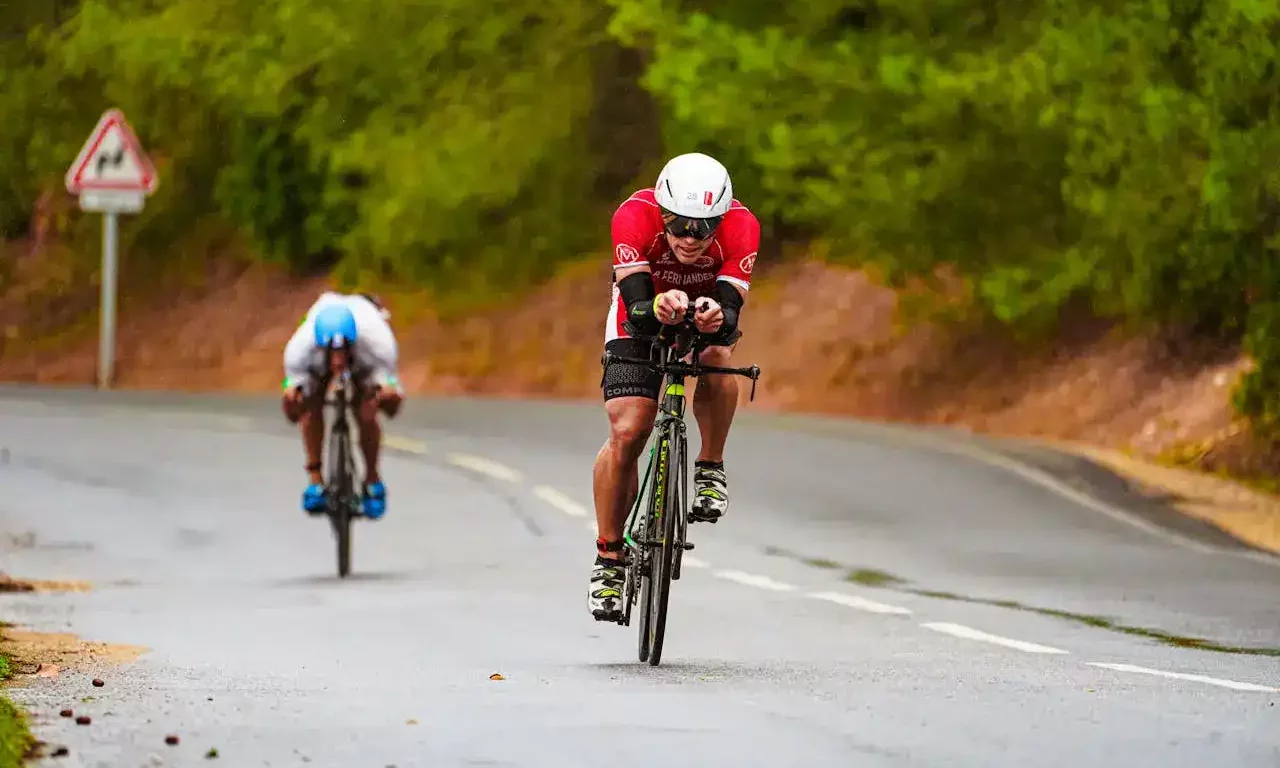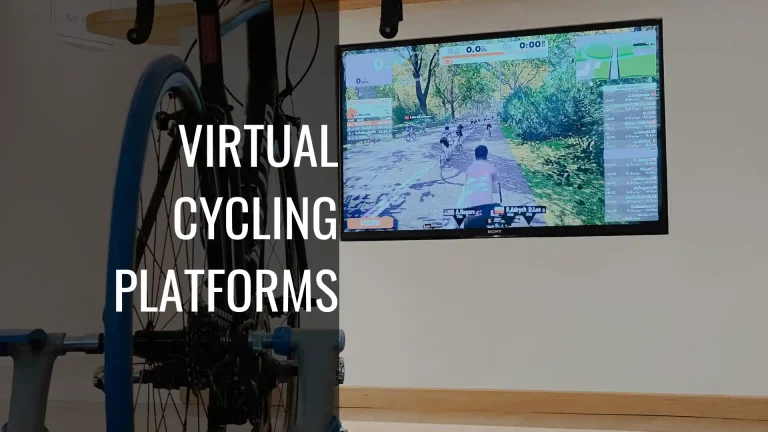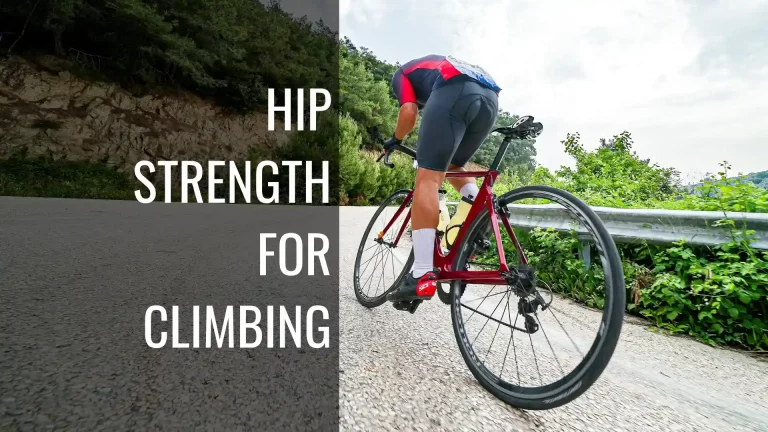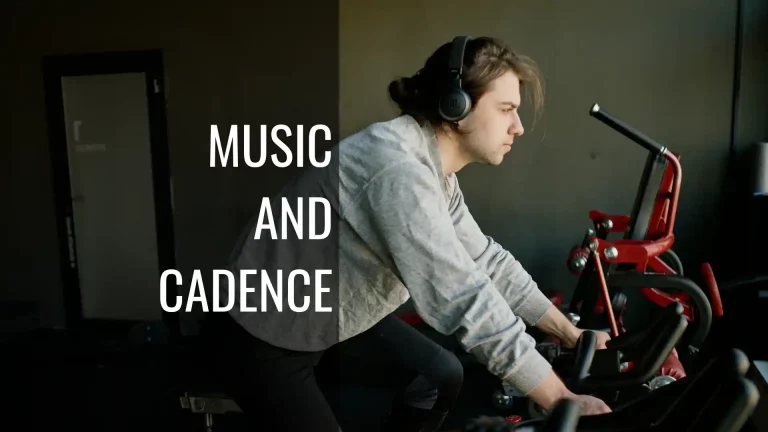
In this blog post, we’ll delve into the essential techniques and strategies for sprint cycling, helping you optimize your performance and leave the competition in the dust. Get ready to discover the secrets of unleashing maximum power on the bike!
Table of Contents
What is Sprint Cycling?
Sprint cycling is a high-intensity form of cycling that involves short bursts of maximal effort, usually lasting between 10 to 30 seconds. These intense sprints are typically followed by a recovery period of lower-intensity cycling or rest. Sprint cycling is popular among competitive cyclists, track cyclists, and athletes who seek to improve their power, speed, and anaerobic endurance. Sprint cycling can also be incorporated into interval training workouts to enhance cardiovascular fitness and overall cycling performance for recreational riders.
For Training (Non-Competitive)
Key characteristics of non-competitive sprint cycling include:
- Short Duration: Sprint efforts typically last between 10 to 30 seconds, though they can occasionally extend up to a minute.
- High Intensity: Sprint cycling involves maximal or near-maximal effort, pushing the cyclist’s physical limits.
- Recovery Periods: To maintain the high-intensity nature of sprints, cyclists include recovery periods between sprints, allowing their bodies to replenish energy stores and clear lactate buildup.
- Strength and Power Development: Sprint cycling emphasizes strength and power in the leg muscles, developing the ability to generate force quickly.
- Enhanced Cycling Performance: Incorporating sprint cycling into a training program can improve overall cycling performance, increasing speed and power output.
Sprint Cycling in a Competitive Setting
While sprint cycling offers numerous benefits, it’s important to approach this high-intensity training method cautiously and progressively. Consult with a coach or trainer to determine the appropriate volume, intensity, and recovery for your fitness level and goals.
- Individual Sprint: A one-on-one race between two riders over three laps of the track. Riders often engage in a game of cat and mouse, trying to force their opponent to lead out the sprint.
- Team Sprint: A team event where two or three riders from the same country or team compete against another team over three laps. Each rider takes turns leading, with the goal of maintaining maximum speed throughout the race.
- Keirin: Originating from Japan, keirin is a race where riders follow a pacing motorcycle (derny) for several laps before sprinting to the finish. It’s a tactical race where positioning behind the derny is crucial.
- Time Trial: A solo race against the clock, where riders aim to complete a set distance in the fastest time possible. Time trials are often longer distances compared to other sprint events.
Sprint cycling requires a combination of raw power, speed, agility, and tactics. Riders often undergo rigorous training programs to develop explosive strength and sprinting abilities, as well as honing their bike handling skills for close-quarters racing.
What Mistakes Do Riders Make When Starting Sprints?
In a Training Setting (Non-Competitive)
- Inadequate Warm-up: Failing to properly warm up the muscles and cardiovascular system before sprinting can increase the risk of injury and limit performance. A proper warm-up should include dynamic stretching, light cycling, and a few shorter sprint efforts to prepare the body for the intense activity ahead.
- Poor Technique: Incorrect technique during sprints, such as excessive upper body movement or improper pedal stroke, can hinder power output and lead to inefficiencies in energy transfer. Practice maintaining a stable and aerodynamic position while sprinting.
- Overestimating Abilities: Beginner sprinters may attempt sprints that are too long or too intense for their current fitness level. Start with shorter sprints at a lower intensity, gradually increasing duration and effort as your fitness improves.
- Neglecting Recovery: Sprints require adequate recovery between efforts to allow the body to replenish energy stores and remove lactate buildup. Failing to provide sufficient recovery can negatively impact performance and increase fatigue.
- Insufficient Resistance: Using low resistance or a low gear during sprints may prevent the development of maximal power and limit the benefits of sprint training. Choose a gear that challenges you while still allowing for a high cadence during sprints.
- Ignoring Strength Training: Strength training off the bike can help improve muscular strength and power, translating to better sprint performance. Neglecting this aspect of training may hinder progress in sprint cycling.
- Poor Nutrition and Hydration: Sprint cycling requires a well-fueled body to perform optimally. Neglecting proper nutrition and hydration can negatively affect energy levels and recovery.
In a Competitive Setting
Starting a sprint in cycling is a critical moment that can often determine the outcome of a race. Several mistakes can happen during this phase, potentially costing riders valuable time or even the race. Here are some common mistakes riders make when starting sprints:
- Poor Positioning: Starting a sprint from a disadvantaged position can significantly hinder a rider’s chances of success. Being caught too far back in the pack or on the wrong side of the track can make it difficult to maneuver and respond to attacks.
- Timing Mistakes: Misjudging the timing of the sprint can lead to starting too early or too late. Starting too early can result in running out of steam before the finish line, while starting too late can mean getting boxed in or being unable to catch up to the leaders.
- Overexertion: Excessive energy expenditure too early in the sprint can lead to fatigue and a lack of power when it matters most. Riders need to pace themselves appropriately, conserving energy until the final push to the finish line.
- Losing Focus: Distractions or loss of focus during the lead-up to the sprint can be detrimental. Riders need to stay focused on their strategy, maintain situational awareness, and be ready to react quickly to changes in the race dynamics.
- Poor Bike Handling: Technical errors such as clipping a pedal, losing traction, or making sudden movements can disrupt the sprint and cause a rider to lose momentum or even crash.
- Ignoring Wind and Drafting: Ignoring wind direction or failing to take advantage of drafting opportunities can result in wasted energy. Riders should position themselves strategically to minimize wind resistance and maximize the benefits of drafting behind other riders.
- Getting Trapped: Being boxed in or unable to find an opening to launch the sprint can severely limit a rider’s options. It’s essential to anticipate potential obstacles and position oneself where there’s room to maneuver.
- Not Committing Fully: Hesitation or indecision during the sprint can allow competitors to gain an advantage. Riders need to commit fully to their move and maintain maximum effort until they cross the finish line.
Avoiding these mistakes requires experience, tactical awareness, and the ability to stay calm under pressure. Training and race experience play a crucial role in improving sprinting skills and minimizing errors during race starts.
Tips for Effective Improvements in Sprint Speeds
- Practice Sprint-Specific Intervals: Incorporate short, high-intensity intervals into your training program, replicating the demands of sprint cycling. Gradually increase the intensity, duration, and number of intervals over time to improve anaerobic capacity and neuro-muscular coordination. Interval training, high-intensity intervals, and short, maximal efforts with adequate recovery periods can help simulate race conditions and improve sprinting ability.
- Improve Technique: Work on refining your technique, maintaining an aerodynamic position, minimizing upper body movement, and applying force evenly throughout the pedal stroke. A more efficient technique will translate into faster sprint speeds. Pay attention to your body positioning, hand placement on the handlebars, and use of body weight to generate power.
- Develop Explosive Power/ Strength Training: Incorporate strength exercises that target the leg muscles, such as squats, lunges, and leg extensions that helps develop explosive power and strength.
- Monitor Progress: Regularly track your sprint performance, analyzing data such as power output, heart rate, and speed. This information can help identify areas for improvement and guide future training.
- Cadence Work: Experiment with different cadences (pedaling revolutions per minute) during sprint workouts to find the optimal cadence for your sprinting style and physiology. Some riders may benefit from higher cadences, while others may prefer lower cadences for maximal power output.
- Start Practice: Dedicate time to practicing sprint starts to improve your reaction time and acceleration off the line. Focus on explosive starts from both a standing and rolling position, and work on quickly reaching top speed.
- Race Simulation: Incorporate race simulations into your training regimen to practice sprinting in competitive scenarios. Work on positioning, tactical decision-making, and responding to attacks from other riders.
- Recovery and Nutrition: Prioritize recovery and nutrition to support your training efforts and optimize performance. Ensure adequate rest between intense training sessions, and fuel your body with a balanced diet rich in carbohydrates, protein, and healthy fats to support muscle repair and growth.
- Mental Preparation: Develop mental toughness and confidence in your sprinting ability through visualization, positive self-talk, and goal-setting. Visualize successful sprints in your mind, focus on maintaining a positive mindset during training and competition, and set realistic but challenging goals to strive for.
Seek Coaching and Feedback: Consider working with a qualified cycling coach who can provide personalized guidance, feedback, and training plans to help you improve your sprinting performance. A coach can offer valuable insights, identify areas for improvement, and tailor your training program to suit your individual strengths and weaknesses.
By incorporating these tips into your training routine and maintaining consistency and dedication, you can effectively enhance your sprint speed and become a stronger, faster sprint cyclist.
What the Best Sprint Riders Have in Common
-
Exceptional Power: Top sprint riders generate an incredible amount of power through their legs and core muscles. This allows them to propel their bikes forward at astonishing speeds during sprints.
-
Fast-Twitch Muscle Fibers: Elite sprint cyclists tend to have a higher percentage of fast-twitch muscle fibers, which are responsible for explosive movements and high power output. This natural advantage gives them an edge in short, intense bursts of speed.
-
Superior Technique: The best sprinters demonstrate impeccable technique, maintaining an aerodynamic position, minimizing upper body movement, and maximizing their pedal stroke efficiency.
-
Mental Toughness: Sprinting is not only physically demanding but also requires a strong mental game. Successful sprint possess mental toughness, remaining calm under pressure, overcoming adversity, and maintaining confidence in their abilities, even in the most challenging race situations.
-
Tactical Awareness: Winning sprints often comes down to split-second decisions and well-executed tactics. The best sprinters have a keen understanding of race dynamics, knowing when to conserve energy, when to make their move, and how to position themselves for the final sprint to the finish line.
- Exceptional Strength-to-Weight Ratio: Sprinters often have a high strength-to-weight ratio, combining muscular power with a lean physique to maximize their sprinting performance. They work on building strength and power while ensuring they maintain a competitive weight for optimal power output.
- Versatility: While some sprinters specialize in certain types of sprint events, such as track sprint or road bunch sprints, the best sprinters often demonstrate versatility across different race formats and terrains. They can adapt their sprinting style to various conditions and excel in a variety of race scenarios.
- Continuous Improvement: Elite sprinters are committed to continuous improvement and strive to refine their skills, techniques, and physical conditioning. They embrace feedback, analyze their performances, and continually seek ways to enhance their sprinting performance.
- Teamwork and Support: In team-based sprint events, such as team sprints or lead-out trains, top sprinters rely on the support of their teammates to position them for the final sprint. They communicate effectively with their teammates, trust their lead-out riders, and work together cohesively to achieve success.
Passion and Dedication: Above all, the best sprinters are passionate about their sport and dedicated to their craft. They put in countless hours of training, make sacrifices to pursue their goals, and approach each race with determination and enthusiasm.
By embodying these qualities and attributes, top sprint riders are able to consistently perform at the highest level and achieve success in the competitive world of cycling sprinting.
Sprinting for Supercharged Cycling
I hope you found this information helpful. Check out my other related posts such as the best leg exercises for cyclists, cycling and back pain, and managing achilles tendonitis when biking. We also recorded a related podcast on injuries and prevention.



